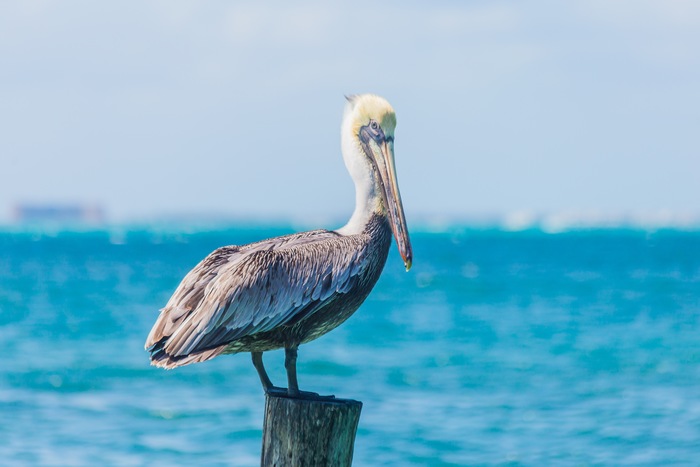Fishing Takes Flight: Tips for Using Birds’ Help to Find Your Next Catch

Looking to amp up your angling game? We can all learn a thing or two from nature’s best fishers—the friendly, feathered sea birds who flock to coasts around the world in search of grub.
Because where birds find food, choice catches are sure to follow. Take a look below as we share a few simple ways to follow the feathers and guide your next angling adventure.
What you can’t see
Experienced anglers pride themselves in their ability to spot what others can’t—action brewing below the surface, perhaps, or the next move of a slippery catch that wants to jerk left when you’re angling right.
It’s true. Foresight and hand-eye mastery are skills that come with years on the water. But even the most adept angler can’t see everything—but where our view fails, following a feathered friend with a true bird’s eye view is just the ticket.
Birds can, of course, physically see things we can’t—because we’re many yards away, or because we just can’t crane our necks like that. Many species of seabirds have an enhanced ability to see through cloudy conditions, or the murkiness of a body of water, thanks to their scope of UV vision. Whereas we might need to toss on a pair of polarized shades to get a sense of what’s really going on in the water, your favorite seabird can do that in an instant—so they’re worth following!
Many seabirds also use their sense of smell to “visualize” fish beneath the surface. We might be accustomed to the scent of fish by the docks, but it’s a little harder to sniff out fish on the open water… especially when all the action’s going on below the surface, and not in the open air. But a seabird may be able to smell the oils given off by baitfish underwater, inviting them to swoop down and see what they can snack on.
Hungry birds, busy waters
The key takeaway? Where there are hungry birds, there are probably busy waters, too. As the birds come down to snack on smaller species, like baitfish, you can get a sense of the larger bites that might be pushing the bait fish up—in other words, what’s good for the seabirds probably means good things for you, too.
Unique species of seabird each have their own way of doing things, of course. For example, if you spot a frigate diving down to forage by some floating sargassum or weed lines, that might be a good indicator that mahi-mahi or similar fish are nearby since they also like floating debris. Or as the aptly-named shearwater gets down to the surface, “cutting” at the water with its wings, you might be right to suspect that it’s found some mackerel, perhaps, a popular snack for blue marlin—the kind you’ll want to catch!
You don’t need to know every sort of seabird to know what they eat, or when to follow them. The general rule of thumb is that bird action might mean biting action below the surface, and it never hurts to check things out.
When you’re on the trail…
One of our best tips for using birds on your search for bites? Pick up a pair of binoculars! If you’re not getting any bites, scan the surrounding area and see if there are any feathered “fishers” diving in for a bite.
If your Robalo has a second station, that’s another great tool to utilize on the trail. It’s about the closest thing to actually having a bird’s eye view, and thus comes in handy when you’re trying to see what a bird sees. You can watch the birds in action, then climb up to the station for a comfortable perch from which to investigate further—are they congregating around some weed lines, or other floating debris, perhaps? Is there an even bigger fish I’m missing? You’ll get a whole new understanding of the water along the way.
When in doubt on the water, follow those feathers—who knows what you might discover? We hope that these tips help you find (and land!) your next big catch.
Bookmark & Share
Previous Article
